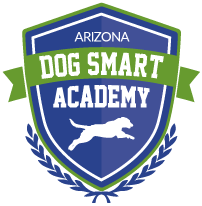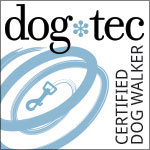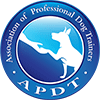Tips for Teaching Dog Table Manners
Do you have a dog that begs? Do you sometimes think it would be easier to not eat than to have to deal with your dogs head on your lap the whole meal? Teaching a dog table manners can sometimes seem like an exercise in starvation!
The holiday season is upon us, and with it comes the stress of making it through without too many debacles. Having a dog in the house could lead to disaster, but with a little planning and practice ahead of time, you and your dog can have a wonderful holiday season.
Let’s take a look at some of the behaviors that make for a dog with bad table manners.
Counter-Surfing
We want to avoid things like dogs putting their feet and faces onto kitchen counters and tabletops. Not only is this a major problem, it is actually dangerous for our dogs. They could eat something bad for them, or burn themselves on a hot stove top. I like to remind myself that whenever my dog has a problem behavior, something I don’t want them doing, what I really need is a solution behavior, what I want them to do instead. In regards to counter-surfing I usually try to remove the temptation first, and have my dog stay away from the counters when they are covered in food.
Tip #1 Train your dog to wait outside of the kitchen, especially while you are cooking.
To accomplish this I train a boundary line at the entrance or entrances of my kitchen, and reward my dog for staying out of the kitchen. Try to start training in a way that makes your dog successful, so use a quiet empty kitchen initially. Once your dog has the hang of the idea, you can raise criteria and train for your goals. If the boundary of your kitchen isn’t obvious to your dog, try adding contrasting tape while your dog is learning.
Begging
 Those puppy-dog eyes can be hard to resist, especially for guests that don’t have to live with them year-round. Every time your dog earns a piece of food for drooling on someone’s lap, they are making a memory of how great begging works. Let’s give them a way better way to earn food, like laying politely on their dog bed.
Those puppy-dog eyes can be hard to resist, especially for guests that don’t have to live with them year-round. Every time your dog earns a piece of food for drooling on someone’s lap, they are making a memory of how great begging works. Let’s give them a way better way to earn food, like laying politely on their dog bed.
Tip #2 Train your dog to go to their bed while you are eating.
You will need to build your dog’s ability to stay on their bed while you are doing something distracting like eating a yummy dinner, so practice rewarding your dog when you walk back over to them.
Jumping for Plates (and/or Joy)
Magic saucers of deliciousness flying above a dog’s head can be pretty hard to resist. Especially if your dog has never been in a situation like that before. When those two front paws leave the ground trouble can abound. It is a good idea to prepare your dog for that temptation, training in a way that makes your dog successful.
Tip #3 Give your dog something better to do.
You can practice moving plates above your dog’s head, and rewarding your dog for ignoring the plates. (I suggest starting with an empty and non-breakable plate). When the house actually fills up, and the buffet line begins it may just be too much. Consider pre-filling a Kong or other food puzzle for your dog with fun frozen mixtures of treats and peanut butter. Your dog can enjoy their treat in another space, while you and your family enjoy yours.
Behaviors from Stress
Thanksgiving and Christmas are favorite seasons for a lot of people, but strangers and strange items entering the house can be scarier than Halloween for our dogs. You might see odd behavior this time of year as the weather changes and our own stress levels rise. To head this off, consider signing up for a holiday training at AZ Dog Sports. You and your dog will have fun re-learning how to apply their training to the real-life aspects of a full house and Christmas meals.
Tip #4 Take the Holiday Manners class at AZ Dog Sports (Thursdays at 9am)
AZ Dog Sports is offering their Holiday Manners class, where the final exam involves working around a table laden with food. Our trainers are also available for one on one private in-home lessons to address specific concerns where they happen.
Extra tips for teaching dog table manners
The holidays can be an exciting and stressful time. Keeping your dog on-leash in the house can help keep them safe and successful with the extra commotion. Family visiting means more trips in and out of the house, and a higher likelihood of someone leaving the door open. Keeping your dog nearby will help them feel more secure, and actually keep them secure.





Leave a Reply